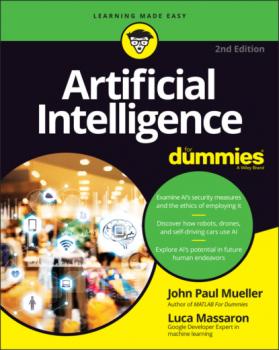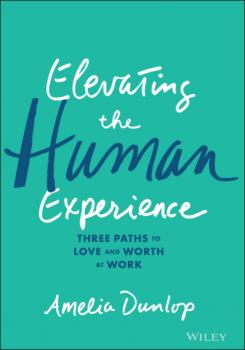John Wiley & Sons Limited
Все книги издательства John Wiley & Sons LimitedLate Capitalist Fascism
What if fascism didn’t disappear at the end of WW II with the defeat of Hitler and Mussolini? Even more troubling, what if fascism can no longer be confined to political parties or ultra nationalist politicians but has become something much more diffuse that is spread across our societies as cultural expressions and psychological states? This is the disturbing thesis developed by Mikkel Bolt Rasmussen, who argues that late capitalism has produced hollowed-out and exchangeable subjectivities that provide a breeding ground for a new kind of diffuse, banal fascism. The overt and concentrated fascism of the new fascist parties thrives on the diffuse fascism present in social media and everyday life, where the fear of being left behind and losing out has fuelled resentment towards foreigners and others who are perceived as threats to a national community under siege. Only by confronting both the overt fascism of parties and politicians and the diffuse fascism of everyday life will we be able to combat fascism effectively and prevent the slide into barbarism.
Advanced Antenna Array Engineering for 6G and Beyond Wireless Communications
Advanced Antenna Array Engineering for 6G and Beyond Wireless Communications Reviews advances in the design and deployment of antenna arrays for future generations of wireless communication systems, offering new solutions for the telecommunications industry Advanced Antenna Array Engineering for 6G and Beyond Wireless Communications addresses the challenges in designing and deploying antennas and antenna arrays which deliver 6G and beyond performance with high energy efficiency and possess the capability of being immune to interference caused by different systems mounted on the same platforms. This timely and authoritative volume presents innovative solutions for developing integrated communications networks of high-gain, individually-scannable, multi-beam antennas that are reconfigurable and conformable to all platforms, thus enabling the evolving integrated land, air and space communications networks. The text begins with an up-to-date discussion of the engineering issues facing future wireless communications systems, followed by a detailed discussion of different beamforming networks for multi-beam antennas. Subsequent chapters address problems of 4G/5G antenna collocation, discuss differentially-fed antenna arrays, explore conformal transmit arrays for airborne platforms, and present latest results on fixed frequency beam scanning leaky wave antennas as well as various analogue beam synthesizing strategies. Based primarily on the authors’ extensive work in the field, including original research never before published, this important new volume: Reviews multi-beam feed networks, array decoupling and de-scattering methods Provides a systematic study on differentially fed antenna arrays that are resistant to interference caused by future multifunctional/multi-generation systems Features previously unpublished material on conformal transmit arrays based on Huygen’s metasufaces and reconfigurable leaky wave antennas Includes novel algorithms for synthesizing and optimizing thinned massive arrays, conformal arrays, frequency invariant arrays, and other future arrays Advanced Antenna Array Engineering for 6G and Beyond Wireless Communications is an invaluable resource for antenna engineers and researchers, as well as graduate and senior undergraduate students in the field.
Corporate Cybersecurity
An insider’s guide showing companies how to spot and remedy vulnerabilities in their security programs A bug bounty program is offered by organizations for people to receive recognition and compensation for reporting bugs, especially those pertaining to security exploits and vulnerabilities. Corporate Cybersecurity gives cyber and application security engineers (who may have little or no experience with a bounty program) a hands-on guide for creating or managing an effective bug bounty program. Written by a cyber security expert, the book is filled with the information, guidelines, and tools that engineers can adopt to sharpen their skills and become knowledgeable in researching, configuring, and managing bug bounty programs. This book addresses the technical aspect of tooling and managing a bug bounty program and discusses common issues that engineers may run into on a daily basis. The author includes information on the often-overlooked communication and follow-through approaches of effective management. Corporate Cybersecurity provides a much-needed resource on how companies identify and solve weaknesses in their security program. This important book: Contains a much-needed guide aimed at cyber and application security engineers Presents a unique defensive guide for understanding and resolving security vulnerabilities Encourages research, configuring, and managing programs from the corporate perspective Topics covered include bug bounty overview; program set-up; vulnerability reports and disclosure; development and application Security Collaboration; understanding safe harbor and SLA Written for professionals working in the application and cyber security arena, Corporate Cybersecurity offers a comprehensive resource for building and maintaining an effective bug bounty program.
Gender in History
A concise yet comprehensive account of the roles and influences of gender over the millennia, featuring new and updated content throughout Gender in History: Global Perspectives, Third Edition , explores the construction and evolution of gender in many of the world’s cultures from the Paleolithic era to the COVID pandemic of the twenty-first century. Broad in geographic and topical scope, this comprehensive volume discusses the ways families, religions, social hierarchies, politics, work, education, art, sexuality, and other issues are linked to various conceptions of gender. Now organized chronologically rather than topically, this extensively revised edition presents a wealth of up-to-date information based on the scholarship of the last decade. New and expanded chapters offer insights on the connections between gender and key events and trends in world history, including domestication and the development of agriculture, the growth of cities and larger-scale political structures, the spread of world religions, changing ideas of race, class, and sexuality, colonialism and imperialism, capitalism, wars, revolutions, and more. Written by a distinguished scholar in the field of women's and gender history, this third edition of Gender in History: Examines how gender roles were shaped by family life, religious traditions, various other institutions, and how the institutions were influenced by gender Considers why gender variations developed in different cultures and in diverse social, ethnic, and racial groups within a single culture Addresses ideas in different cultures that shaped both informal societal norms and formalized laws Explores debates about the origins of patriarchy, the development of complex gender hierarchies, and contemporary movements for social change Discusses the gender implications of modern issues including the global pandemic and ongoing cultural and economic shifts Includes an accessible introduction to key theoretical and methodological issues and an instructor’s website site with visual and written original sources Gender in History: Global Perspectives, Third Edition , is essential reading for undergraduate and graduate students in courses such as those on women’s history, women in world history, and gender in world history, and a valuable supplement for general survey courses within History and Women’s and Gender Studies programs.
Continuity Model Generation
Organize and plan for your family business’s continued, intergenerational success Continuity Model Generation: Integrating Wealth, Strategy, Talent, and Governance Plans delivers a cohesive and comprehensive plan for family business leaders who seek to improve the chances of sustaining success across generations. Incorporating four distinct—but closely related—plans, Continuity Model Generation shows family businesses how to manage their strategy, their wealth, their talent, and their governance to achieve multi-generational success. The book also offers: A coherent framework (Continuity Canvas) for the integration of its multiple plans affecting every critical aspect of the family-owned or controlled business Straightforward and practical frameworks, meta-frameworks, and cornerstones to ground your family business’s strategy A variety of templates, checklists, and forms to organize your thinking and strategy Ideal for business-owning families, as well as their stakeholders and those who advise them, Continuity Model Generation: Integrating Wealth, Strategy, Talent, and Governance Plans is required reading for anyone interested in maintaining and developing family-based wealth.









